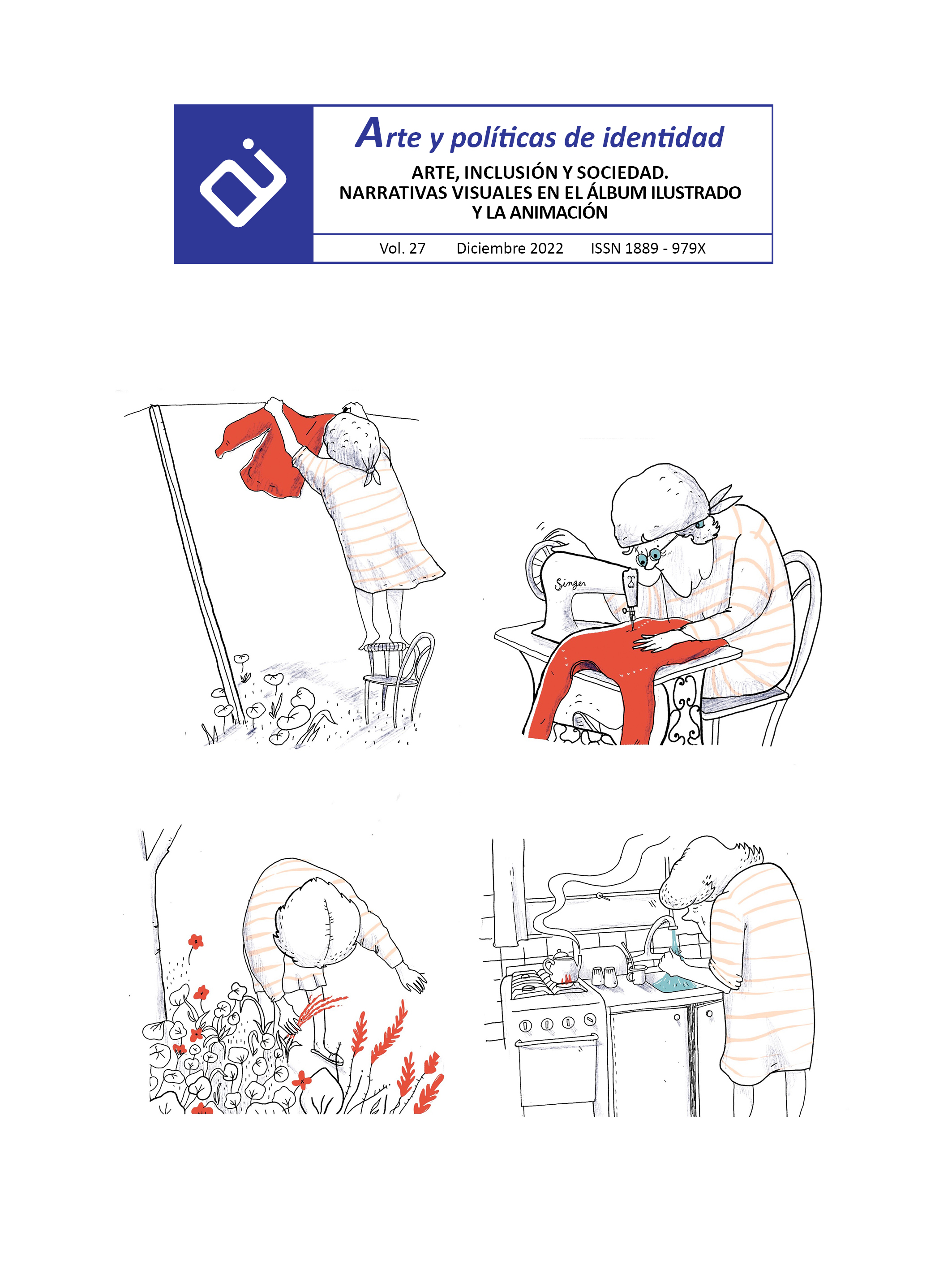The school as a strategic place for the social reactivation of the neighbourhood
Abstract
This article presents a project that is defined in the context of artistic practices aimed at improving society. A proposal for collective painting emerged and developed in the public primary school Barriomar 74, with the aim of denouncing the precarious situation of the peripheral neighbourhood of the city of Murcia: La Purísima-Barriomar. The pictorial action arose and developed within the public primary school of the same name as the neighbourhood, with the support and participation of some of the pupils, most of whom are immigrants. A visual story with which the author of this text, as well as the artist who carries out the project integrates with the pupils in order to understand the social and cultural discrimination in which they live. With tinges of activist, collaborative and public art, the practice is developed thanks to the collaboration of the pupils and the teachers. The figure of the artist emerges as an agent from outside the neighbourhood whose aim is to act against this situation of social unrest, as well as getting involved in the cause and providing the affected community with the right tools so that the action can be sustained over time.
Downloads
-
Abstract302
-
PDF (Español (España))425
References
Ardenne, P. (2006). Un arte contextual. Creación artística en medio urbano, en situación, de intervención, de participación. Cendeac.
Blanco, P. (2005). Prácticas artísticas colaborativas en la España de los años noventa. En VV.AA. (ed.) Desacuerdos. Sobre arte, políticas y esfera pública en el Estado español (pp. 188-205). Edicions de l’Eixample.
Blanco, P. (2001). Explorando el terreno. En Modos de hacer: arte público, esfera pública y acción directa (pp. 23-50). Ediciones Universidad de Salamanca.
Centro Regional de Estadística de Murcia (2020). Padrón municipal de habitantes. https://econet.carm.es/web/crem/inicio/-/crem/sicrem/PU_padron/sec0.html
Felshin, N. (2001). Pero, ¿esto es arte? En Modos de hacer: arte público, esfera pública y acción directa (pp. 73-94). Ediciones Universidad de Salamanca.
Fernández Fariña, A. (2009). Lo que la pintura no es. La lógica de la negación como afirmación del campo expandido en la pintura. Arte y Estética.
Fernández Fariña, A. (2010). La pintura en el campo expandido: revisión de la teoría de Rosalind E. Krauss. Revista Investigación: Cultura, Ciencia y Tecnología, 2 (3), 55-59. https://www.researchgate.net/publication/315459094
Fernández Fariña, A. (2014). Pintura site. Dardo.
Guillamet, L. y Roca D. (2017). La doble cara del arte colaborativo: El cruce entre teoría y praxis. Interartive. https://interartive.org/2013/08/arte-colaborativo
Krauss, R. (2015). La originalidad de la Vanguardia y otros mitos modernos. Alianza Forma.
Krauss, R (2011). La escultura en el campo expandido. https://visuales4.files.wordpress.com/2011/08/rosalind-krauss-la-escultura-en-el-campo-extendido.pdf
Lía, C. (2013). El arte participativo en el espacio público y la creación colectiva para la transformación social. Creatividad y arte. Creatividad y Sociedad, (20). https://ri.conicet.gov.ar/bitstream/handle/11336/3608/CONICET_Digital_Nro.4839_A.pdf?sequence=2&isAllowed=y
Lacy, S. (2010). Debated Territory: Toward a critical language for Public Art. En Leaving Art:Writings on Performance, Politics, and Publics, 1974–2007 (pp. 60-83). Ria Christie Collection.
Lippard, L. (2001). Mirando alrededor. Dónde estamos y dónde podríamos estar. En Modos de hacer: arte público, esfera pública y acción directa (pp. 51-72). Salamanca: Ediciones Universidad de Salamanca.
Lucas, A. (2021, 18 de junio). Barriomar cambia el disuasorio por un parque “que integra el barrio”. Diario La Opinión. https://www.laopiniondemurcia.es/murcia/2021/06/18/barriomar-cambia-disuasorio-parque-integra-53830977.html
Tonucci, F. (2015). La ciudad de los niños. Grao.
Works published in this journal are subject to the following terms:
- The Service of Publications from the University of Murcia (publishing house) keeps the published works’ copyrights, and favors and allows the reuse of these works under the license indicated in point 2.
- Works are published in the journal’s online edition under the license Creative Commons Reconocimiento-NoComercial-SinObraDerivada 3.0 España(texto legal). They can be copied, used, disseminated, transmitted and publicly exhibited, as long as: i) the author and original source of publication are cited (journal, publishing house and work’s URL); ii) they are not used for commercial purposes; iii) the existence and specifications of this license are mentioned.
3. Conditions for auto-file. It is allowed and encouraged that authors share electronically their pre-print version (the pre-reviewed version) and /or post-print version (the reviewed and accepted version) of their Works before the publication, since it promotes its circulation and dissemination. RoMEO color: green.










